Category: Learn/Brainstorm/Try
-
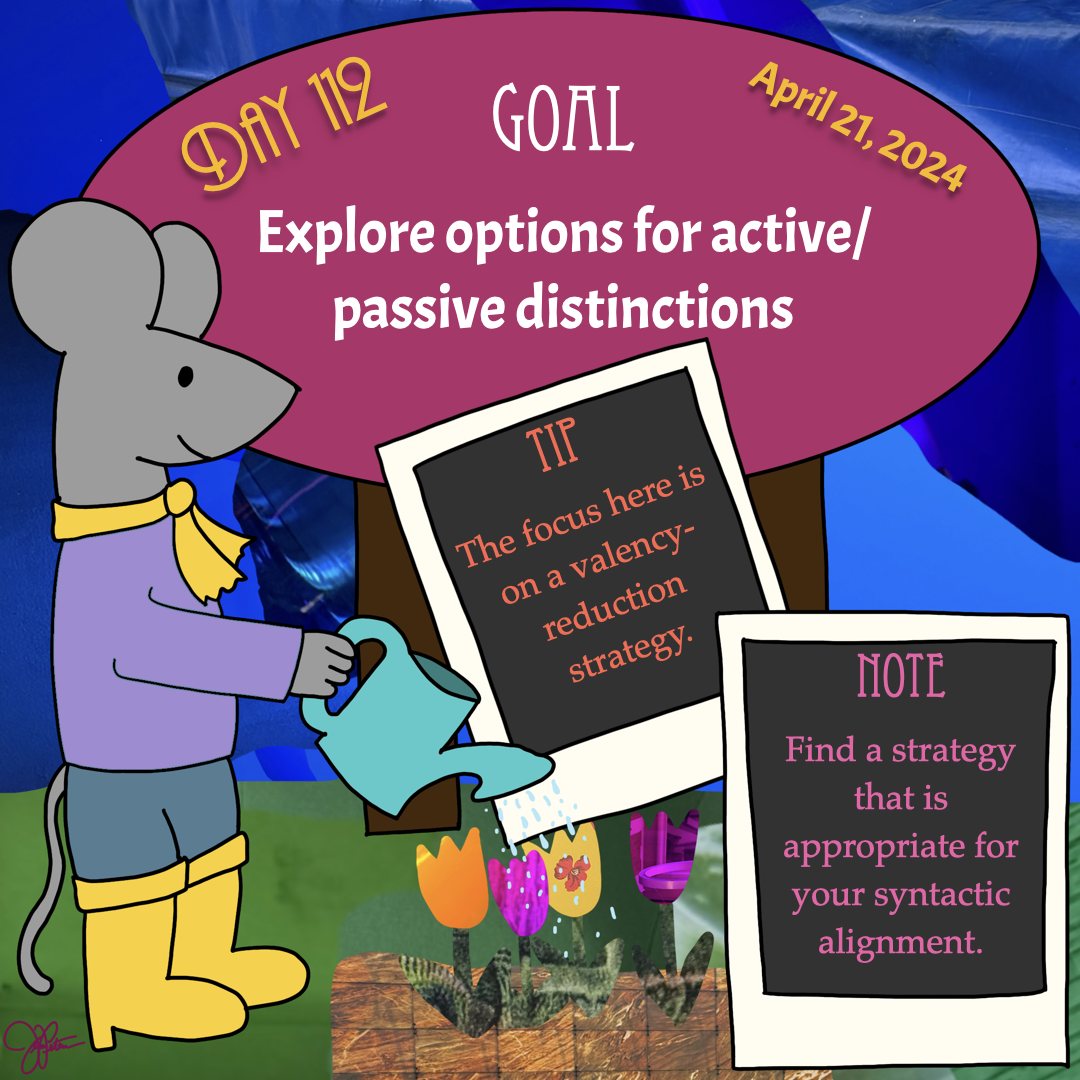
Day 112: April 21, 2024
Goal: Explore options for active/passive distinctions Note: Find a strategy that is appropriate for your syntactic alignment. Tip: The focus here is on a valency-reduction strategy. Work focus: Learn/Brainstorm/Try Another type of inflection that can occur with verbs is passivization. This inflection is special, though, because it actually changes the valency of a transitive verb…
-
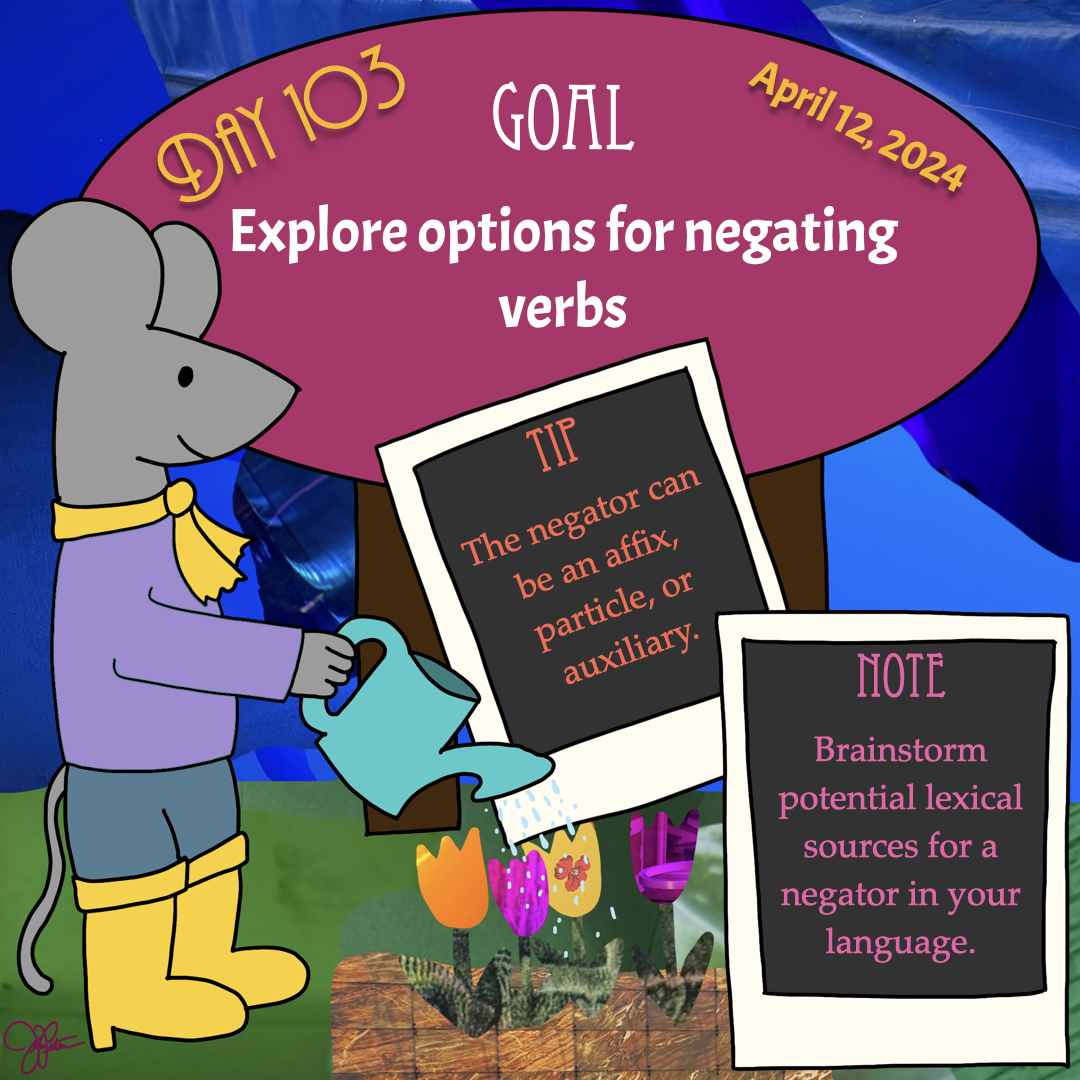
Day 103: April 12, 2024
Goal: Explore options for negating verbs Note: Brainstorm potential lexical sources for a negator in your language. Tip: The negator can be an affix, particle, or auxiliary. Work focus: Learn/Brainstorm/Try Today’s focus is on exploring options for negating verbs. You have a variety of options for negation strategies, such as creating an affix that attaches…
-
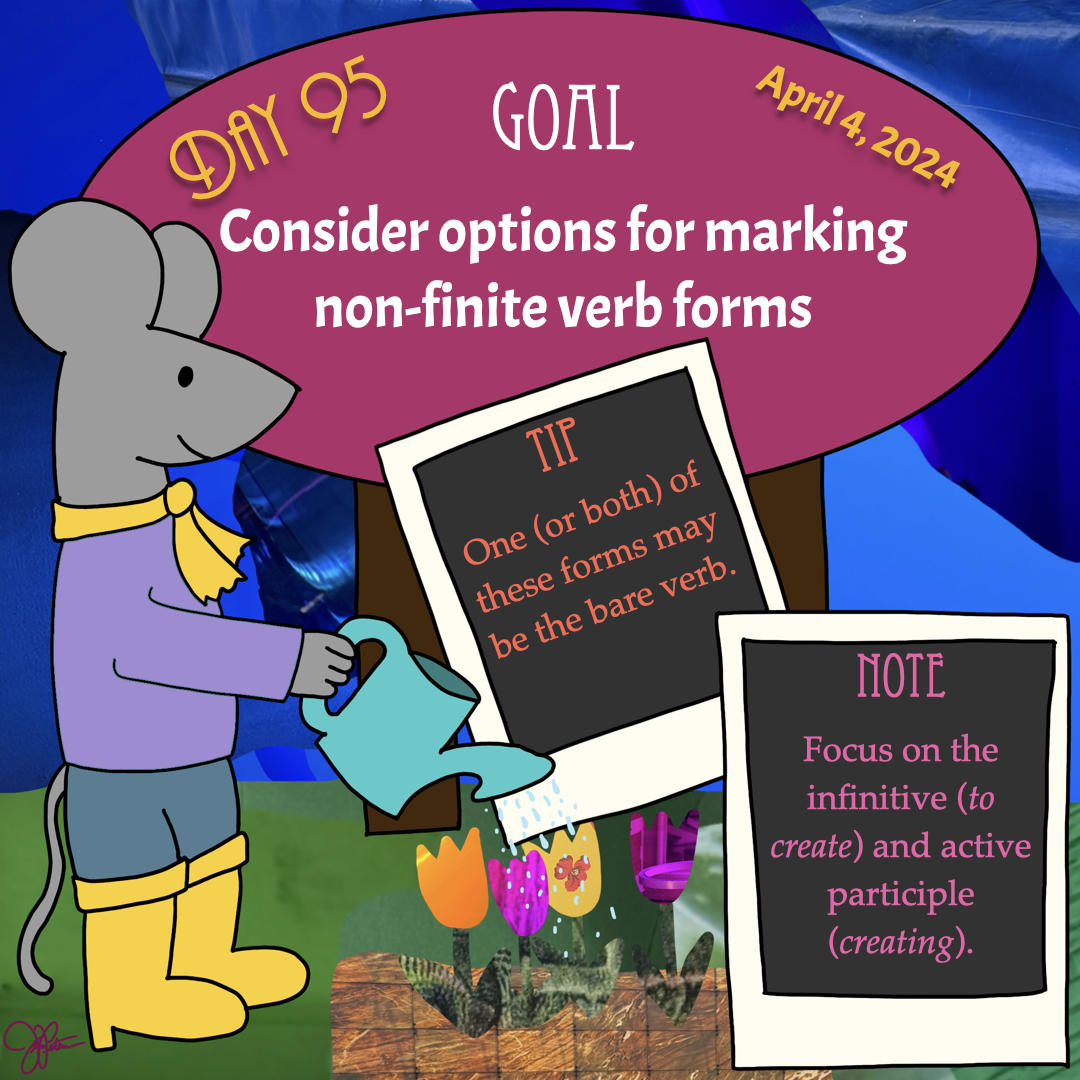
Day 95: April 4, 2024
Goal: Consider options for marking non-finite verb forms Note: Focus on the infinitive (to create) and active participle (creating). Tip: One (or both) of these forms may be the bare verb. Work focus: Learn/Brainstorm/Try Consider whether you want to specifically mark the infinitive form of a verb (e.g. to speak, hablar, sprechen) and, if so,…
-
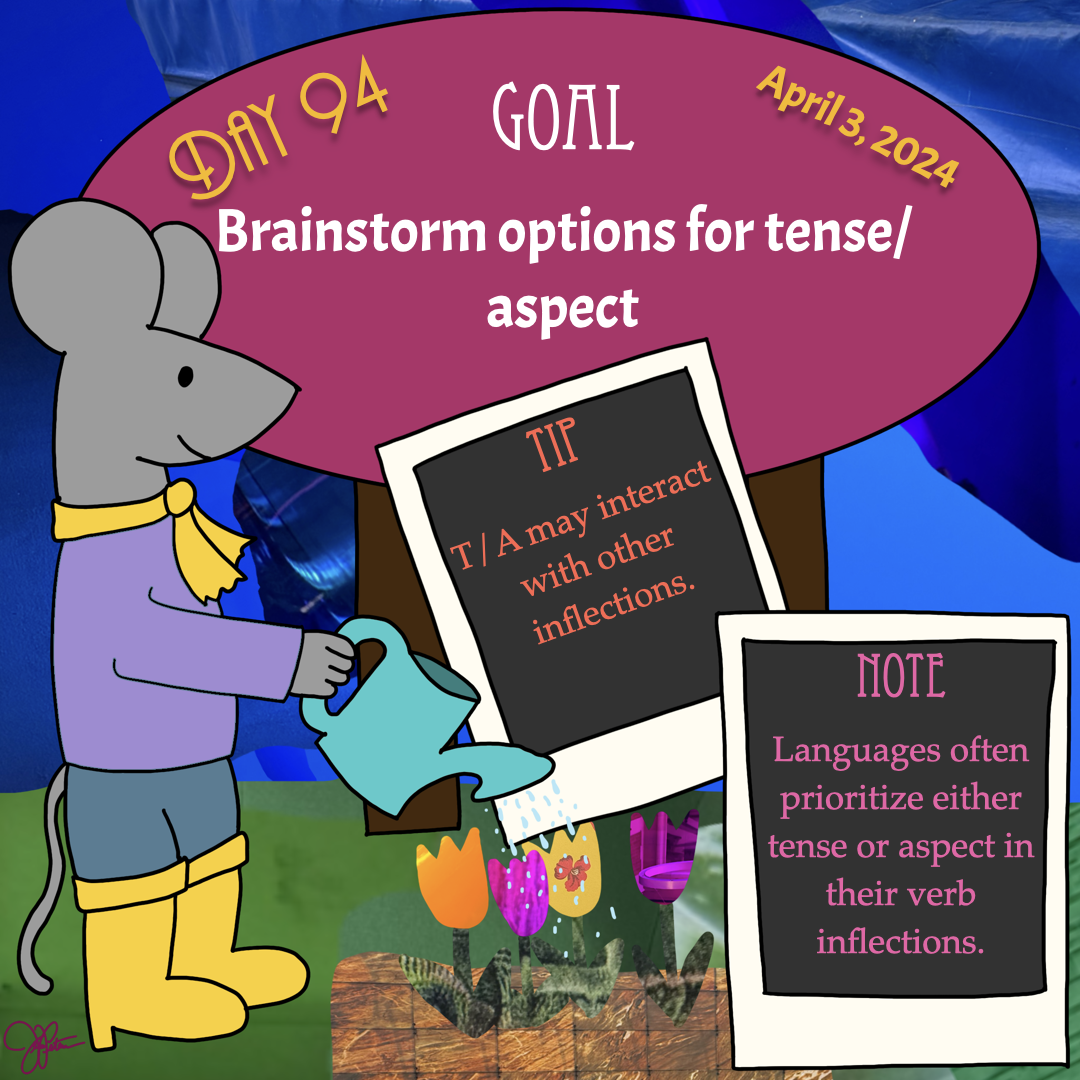
Day 94: April 3, 2024
Goal: Brainstorm options for tense/aspect Note: Languages often prioritize either tense or aspect in their verb inflections. Tip: T/A may interact with other inflections. Work focus: Learn/Brainstorm/Try Specifically, today’s brainstorming session is about tense and/or aspect. While you can end up having ways to express both in your language, languages often prioritize either tense or…
-
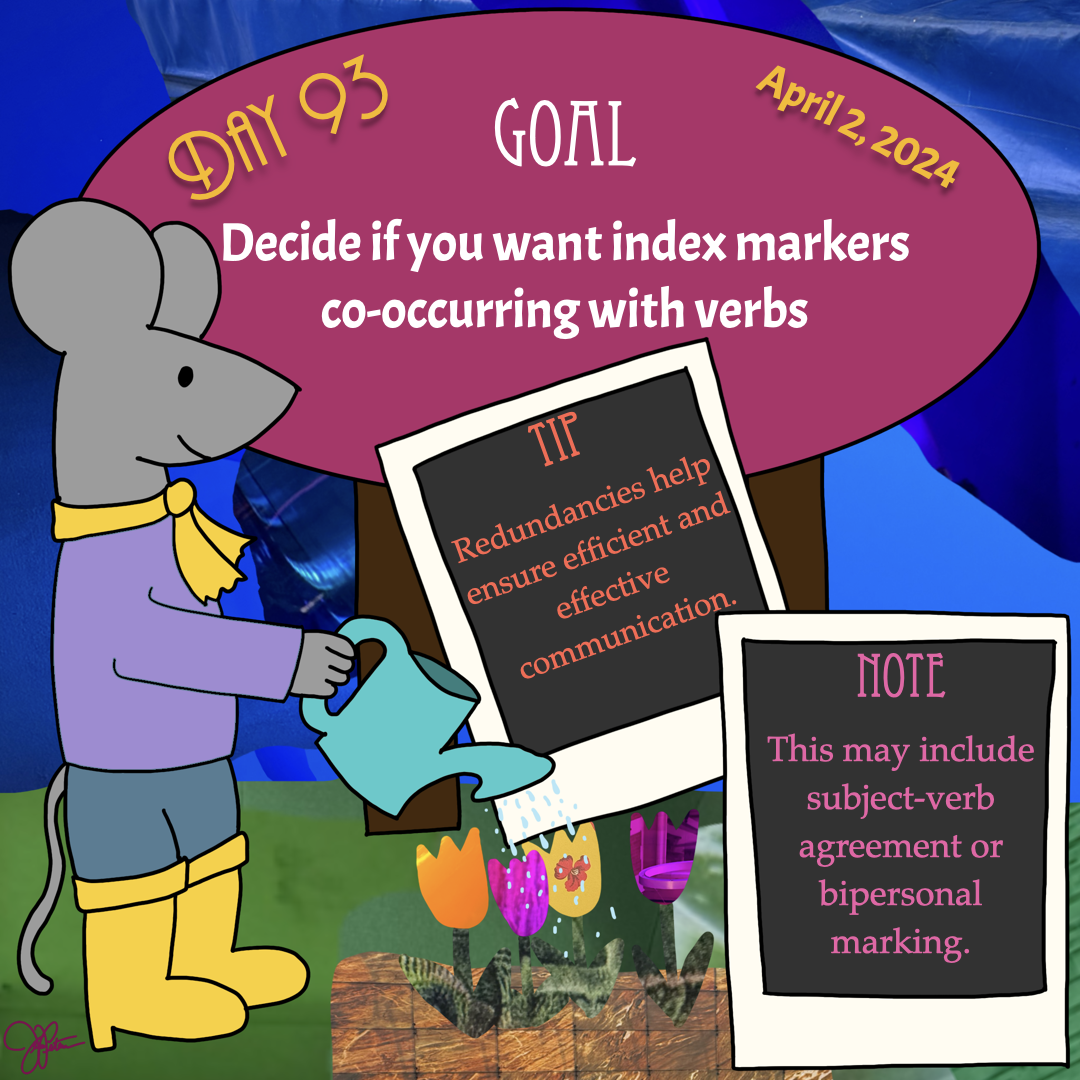
Day 93: April 2, 2024
Goal: Decide if you want index markers co-occurring with verbs Note: This may include subject-verb agreement or bipersonal marking. Tip: Redundancies help ensure efficient and effective communication. Work focus: Learn/Brainstorm/Try Verbs can occur with index markers that reflect some aspect of one (or more) of their arguments. Examples of these markers include subject-agreement inflections (i.e.…
-
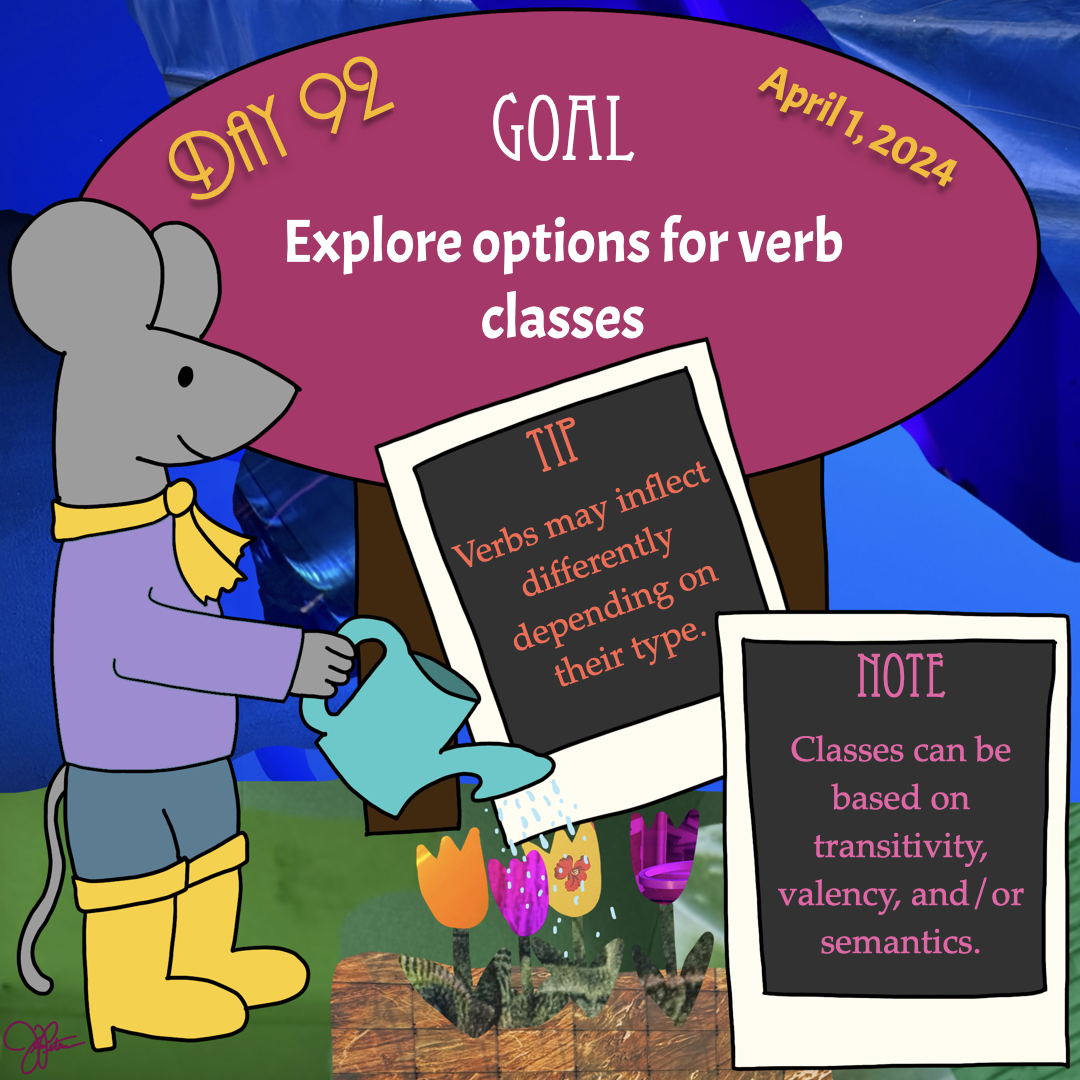
Day 92: April 1, 2024
Goal: Explore options for verb classes Note: Classes can be based on transitivity, valency, and/or semantics. Tip: Verbs may inflect differently depending on their type. Work focus: Learn/Brainstorm/Try Before making decisions about what kinds of inflections you want to occur with your verbs (e.g. subject agreement, tense marking, etc.), first consider whether you want all…
-
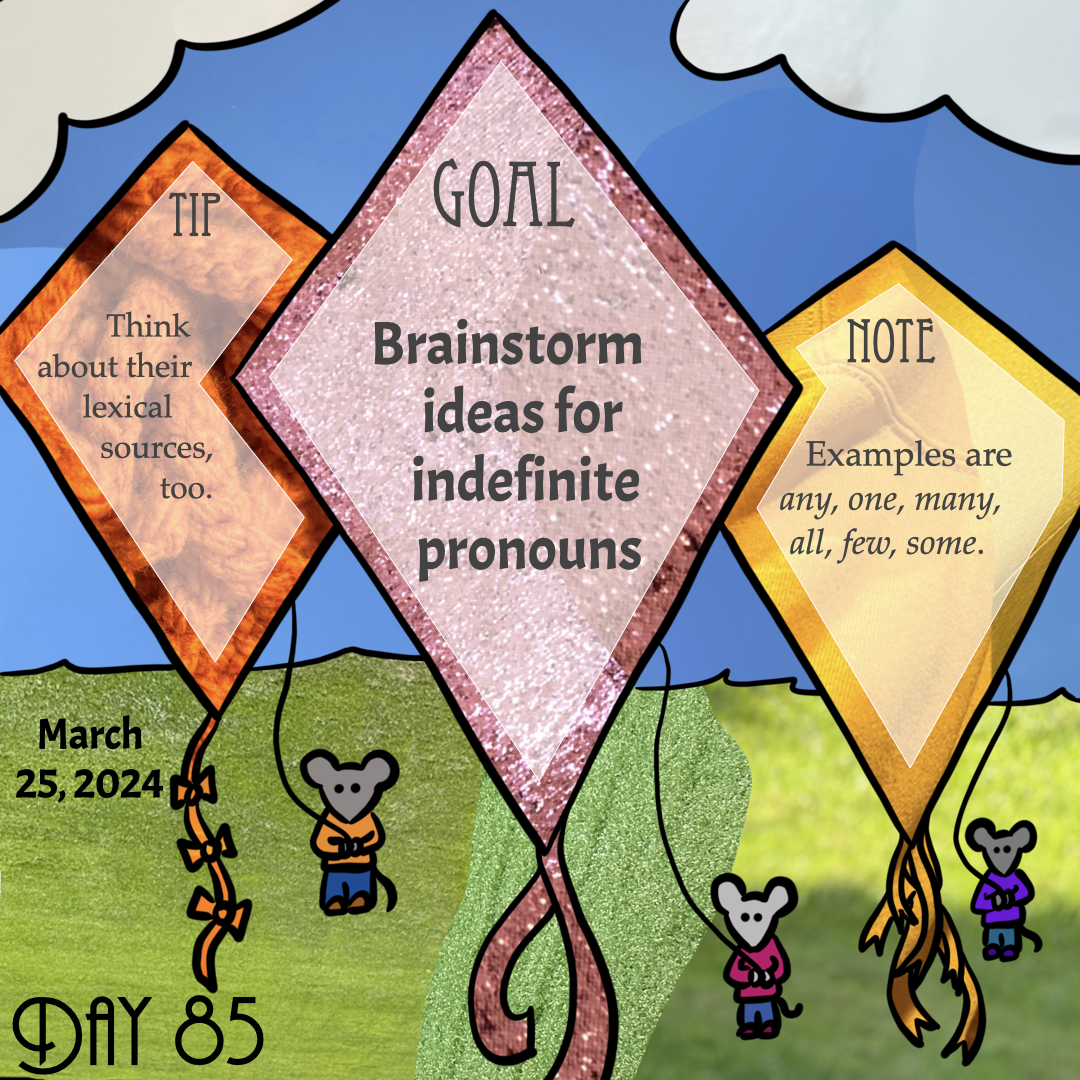
Day 85: March 25, 2024
Goal: Brainstorm ideas for indefinite pronouns Note: Examples are any, one, many, all, few, some. Tip: Think about their lexical sources, too. Work focus: Learn/Brainstorm/Try In the coming week, you will be prompted to create a series of indefinite pronouns. Examples of these kinds of pronouns are any, one, many, all, few, and some. In…
-
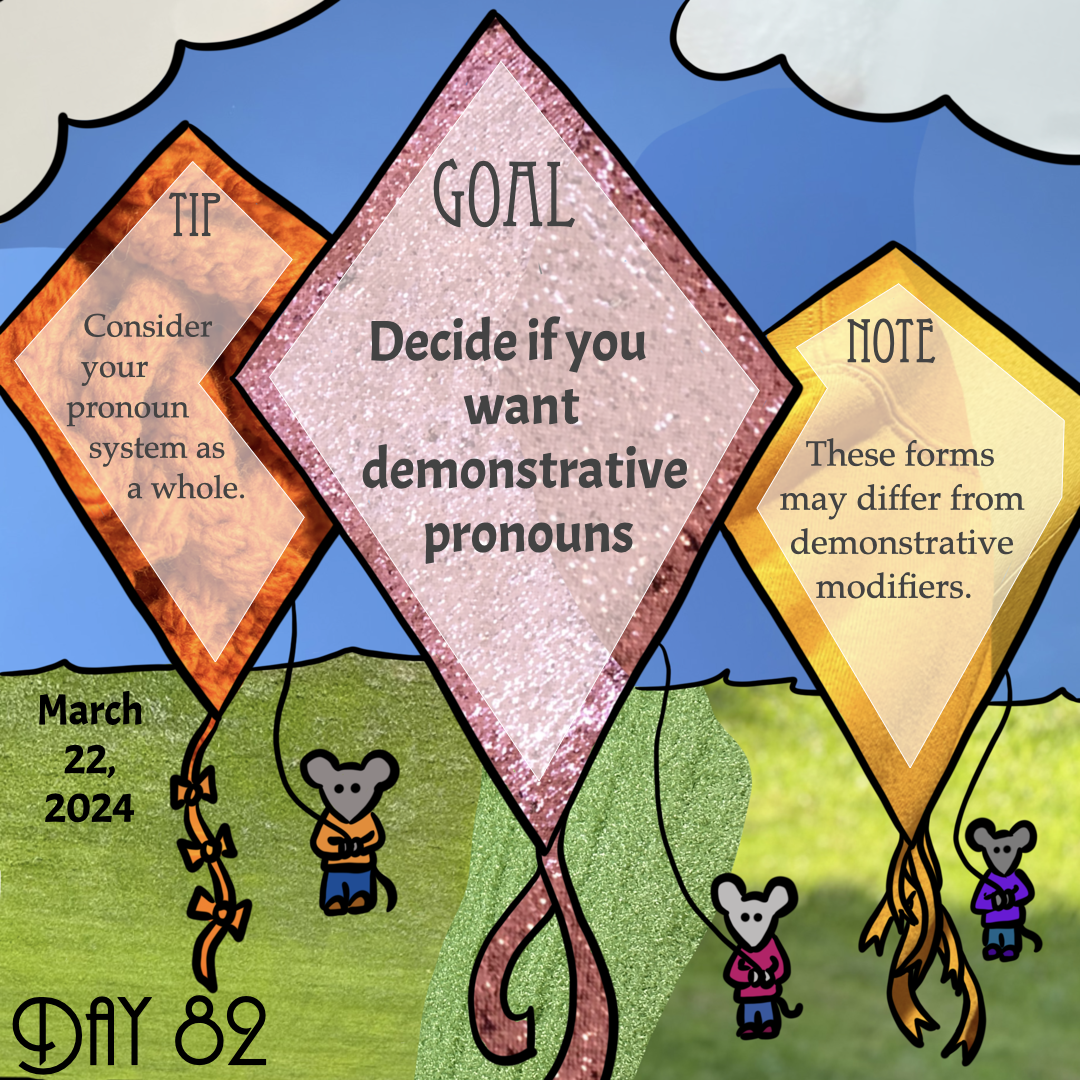
Day 82: March 22, 2024
Goal: Decide if you want demonstrative pronouns Note: These forms may differ from demonstrative modifiers. Tip: Consider your pronoun system as a whole. Work focus: Learn/Brainstorm/Try Demonstrative pronouns differ from demonstrative modifiers in that they stand alone. In English, the modifier and pronoun forms are identical, so it’s difficult to see any difference when “those”…
-
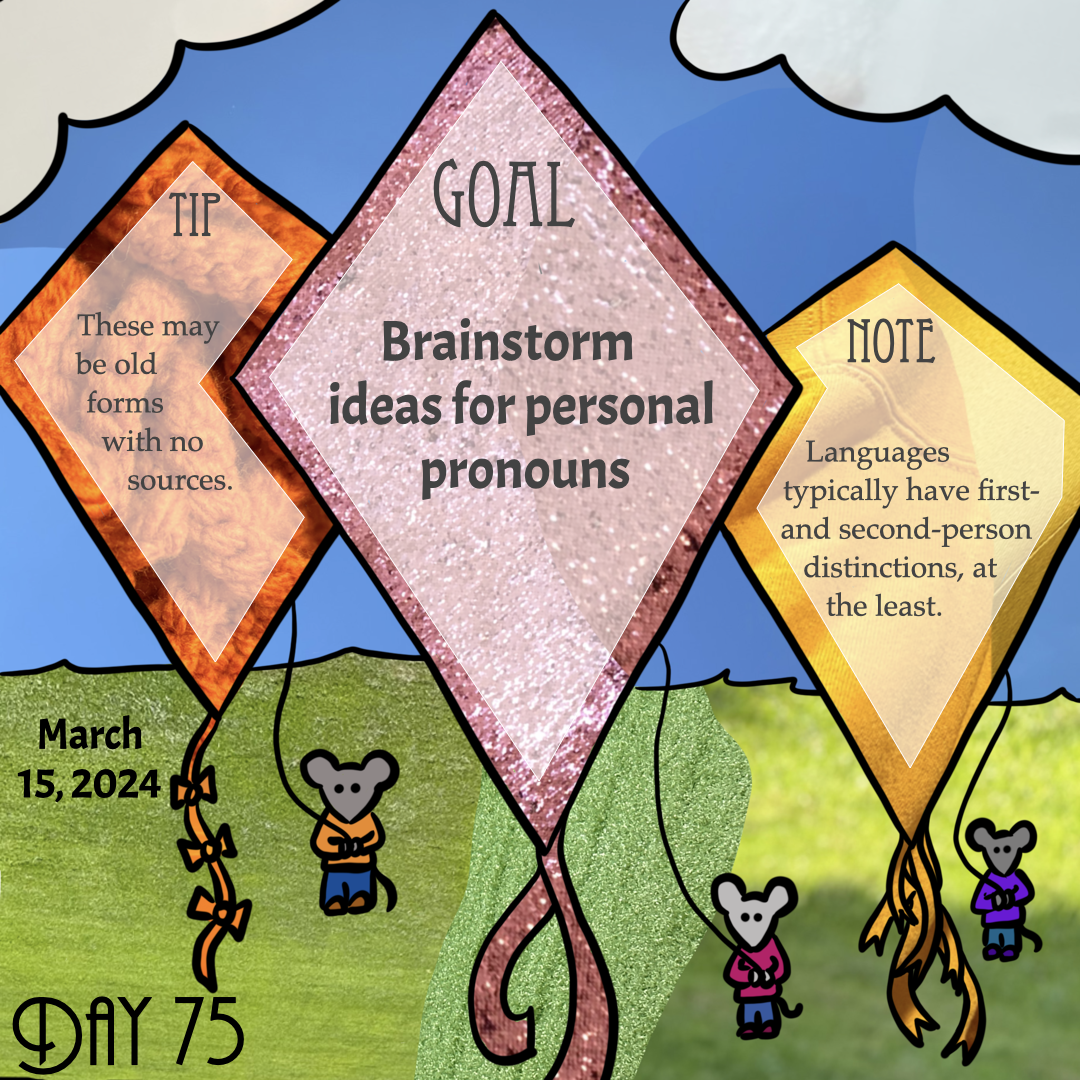
Day 75: March 15, 2024
Goal: Brainstorm ideas for personal pronouns Note: Languages typically have first- and second-person distinctions, at the least. Tip: These may be old forms with no sources. Work focus: Learn/Brainstorm/Try Personal pronouns is a series of pronouns that indicate grammatical person. The table below describes the basic referents of personal pronouns for singular and plural forms—that…
-
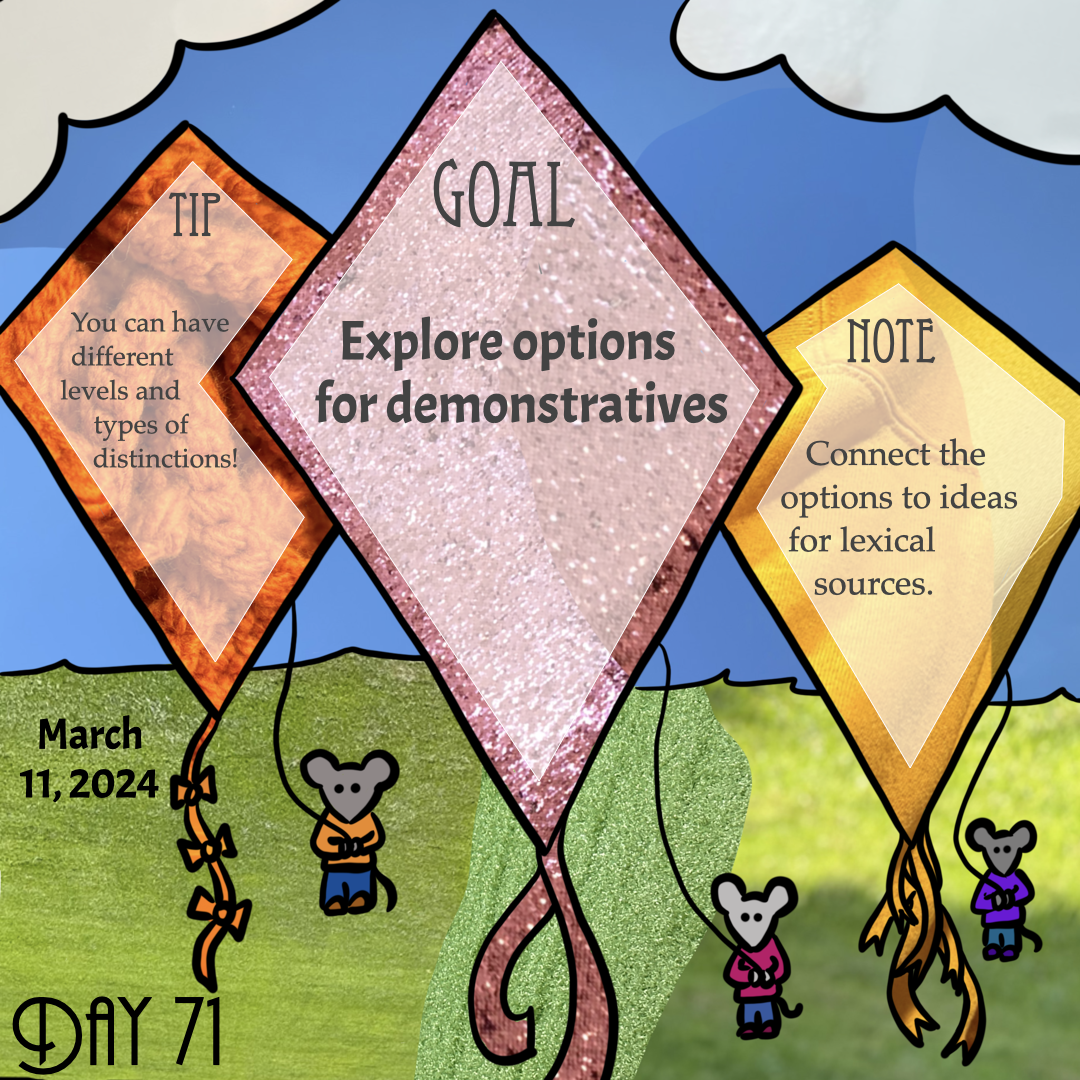
Day 71: March 11, 2024
Goal: Explore options for demonstratives Note: You can have different levels and types of distinctions! Tip: Connect the options to ideas for lexical sources. Work focus: Learn/Brainstorm/Try Demonstrative forms are often distance-oriented or person-oriented, and, in the majority of natlangs, demonstratives have a two- or three-way distinction. (Some languages only have one demonstrative form without…